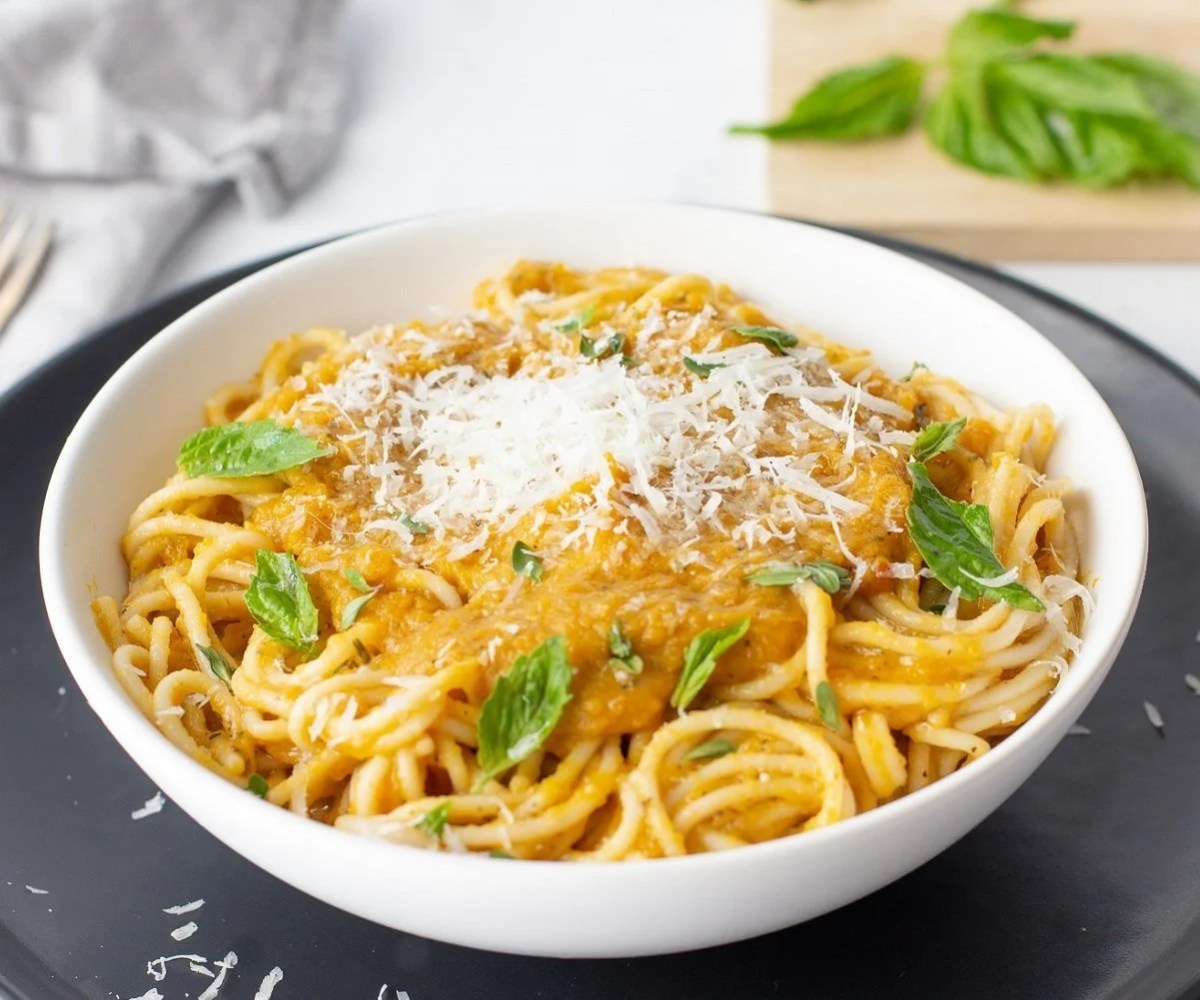Imagine a culinary escape where creamy, decadent pasta dishes are accessible to everyone, regardless of dietary restrictions. This isn’t a dream; it’s the promise of an Allergen-Free Pasta Night. Picture vibrant plates piled high with perfectly cooked pasta, swathed in rich, dairy-free sauces, and complemented by colorful, allergen-friendly vegetables. Each bite is a symphony of flavor, texture, and a comforting sense of inclusivity, proving that delicious and allergy-safe can coexist beautifully.
This guide navigates the world of allergen-free pasta, offering a comprehensive exploration of pasta options, innovative dairy-free sauces, safe vegetable choices, and adaptable recipes to suit various dietary needs. We’ll delve into practical techniques, address common challenges, and empower you to create a truly unforgettable and worry-free pasta night for yourself and your guests. Prepare to be inspired by the possibilities of flavorful and inclusive dining.
Allergen-Free Pasta Options

Choosing the right pasta is crucial for a delicious and safe allergen-free meal. This section explores various pasta types suitable for different dietary needs, along with safe preparation methods and the importance of careful label reading. Remember, always double-check ingredient lists to ensure the product meets your specific requirements.
Allergen-Free Pasta Types
Selecting pasta that aligns with your specific allergen restrictions requires careful consideration. The following table provides a summary of five common pasta types and their allergen profiles. Note that “Other Allergens” may vary by brand and specific product; always refer to the individual product label for complete information.
| Pasta Type | Gluten-Free? | Dairy-Free? | Other Allergens |
|---|---|---|---|
| Brown Rice Pasta | Yes | Yes | May contain soy (depending on processing); always check the label. |
| Quinoa Pasta | Yes | Yes | Potentially cross-contamination with other allergens during manufacturing; check labels carefully. |
| Lentil Pasta | Yes | Yes | May contain traces of other legumes; check labels. |
| Corn Pasta | Yes | Yes | May contain traces of other grains; check labels. |
| Chickpea Pasta | Yes | Yes | May contain traces of other legumes or nuts (depending on processing); check labels. |
Pasta Preparation Methods
The method you choose to cook your pasta can subtly impact its texture and cooking time. Each method offers unique benefits.
Proper pasta preparation is key to achieving the perfect texture and avoiding overcooking. Here are three common methods:
- Boiling: The traditional method. Water is brought to a rolling boil, pasta is added, and cooked according to package directions. Boiling provides a consistently cooked pasta, but can sometimes lead to slightly softer texture if overcooked. It’s generally the fastest method.
- Steaming: Pasta is placed in a steamer basket over boiling water. This method results in a slightly firmer texture compared to boiling, as the pasta is not directly immersed in the water. Steaming might take slightly longer than boiling.
- Baking: Pasta can be baked in a casserole dish with sauce and other ingredients. This method often results in a slightly more tender texture, with the pasta absorbing flavors from the sauce. Baking takes the longest but offers a convenient one-dish meal.
Checking Ingredient Labels
Always meticulously examine the ingredient list on pasta packaging. Manufacturers may use shared processing equipment or include additives that contain hidden allergens. Even products labeled “gluten-free” or “dairy-free” may contain traces of these allergens due to cross-contamination during production. Carefully checking labels is crucial for preventing accidental allergen exposure. Look for statements like “May contain traces of…” or “Processed in a facility that also processes…” to be fully informed.
Creamy Sauce Recipes (Dairy-Free)
Creating creamy sauces without dairy requires a little ingenuity, but the results are well worth the effort. These recipes offer delicious and versatile options for your allergen-free pasta night, showcasing the rich textures and flavors achievable without relying on traditional dairy products. Each recipe focuses on a different base ingredient, providing variety in both taste and nutritional profile.
Cashew Cream Sauce
This rich and decadent sauce utilizes soaked cashews for a luxuriously smooth texture. The subtle sweetness of the cashews complements a wide range of pasta dishes.
- Soak 1 cup raw cashews in hot water for at least 30 minutes, or preferably overnight. This softens them, ensuring a perfectly smooth sauce.
- Drain the cashews and add them to a high-speed blender along with 1 cup of water, 2 tablespoons of nutritional yeast (for a cheesy flavor), 1 tablespoon of lemon juice, 1 clove of garlic, and salt and pepper to taste.
- Blend until completely smooth and creamy, adding more water if needed to reach your desired consistency. A thicker sauce works well with heartier pastas.
- Taste and adjust seasonings as needed. Consider adding a pinch of red pepper flakes for a touch of heat or fresh herbs like basil or parsley for brightness.
Coconut Cream Sauce
Coconut milk provides a naturally creamy base with a subtle sweetness and tropical hint. This sauce is particularly well-suited for pasta dishes with vegetables or seafood.
- Open a can of full-fat coconut milk and scoop out the thick cream from the top, leaving the watery liquid behind. This ensures a richer, creamier sauce.
- Heat the coconut cream in a saucepan over medium heat. Add 1 tablespoon of tomato paste, 1 tablespoon of lime juice, and a pinch of salt. Stir until well combined.
- Simmer for 5-7 minutes, stirring occasionally, until the sauce slightly thickens. The heat helps to meld the flavors and create a more cohesive sauce.
- Stir in a handful of chopped cilantro or other fresh herbs for a vibrant pop of flavor and color. A squeeze of extra lime juice brightens the sauce beautifully.
Avocado Cream Sauce
Avocado’s creamy texture and mild flavor make it an ideal base for a vibrant green sauce. This sauce is naturally rich in healthy fats and offers a unique flavor profile.
- Scoop the flesh of one ripe avocado into a food processor or blender. Ripe avocados are key for a smooth and creamy consistency.
- Add ½ cup of vegetable broth, 2 tablespoons of lime juice, 1 tablespoon of olive oil, and salt and pepper to taste. The vegetable broth thins the sauce to the desired consistency.
- Blend until completely smooth and creamy. Adding a small amount of water can further adjust the consistency if needed.
- For a richer flavor, consider adding a small amount of nutritional yeast or a pinch of garlic powder. Fresh cilantro or parsley adds a welcome freshness.
Dairy-Free Creamy Sauce Comparison
| Sauce Type | Texture | Flavor Profile | Nutritional Highlights |
|---|---|---|---|
| Cashew Cream | Very smooth, luxurious | Nutty, subtly sweet, savory | High in healthy fats, good source of protein and fiber |
| Coconut Cream | Rich, slightly thick | Sweet, subtly coconutty, tropical | High in healthy fats, source of electrolytes |
| Avocado Cream | Smooth, slightly chunky (depending on blending), vibrant green | Mild, slightly nutty, fresh | High in healthy fats, good source of fiber and potassium |
Challenges in Achieving Creamy Texture Without Dairy and Solutions
Achieving a creamy texture without dairy can present some challenges. One common issue is achieving the desired thickness and smoothness. Using a high-speed blender or food processor helps significantly in creating a smooth sauce. Soaking nuts or seeds before blending ensures a smoother, creamier consistency. Another challenge is achieving a rich, flavorful sauce. Nutritional yeast, lemon juice, or other acidic ingredients can add depth of flavor and enhance the creaminess. Finally, managing the consistency is important. Adding more liquid gradually helps adjust the thickness to the desired level. For thicker sauces, simply reduce the liquid amount initially.
Allergen-Free Vegetable Additions
Creating a delicious and safe pasta dish requires careful consideration of the vegetables used. Choosing vegetables low in common allergens and preparing them correctly is crucial for those with dietary restrictions. This section focuses on selecting and preparing vegetables to enhance your allergen-free pasta night.
Selecting the right vegetables is key to creating a vibrant and flavorful pasta dish while minimizing the risk of allergic reactions. The following vegetables are generally well-tolerated and offer a range of nutritional benefits.
Five Commonly Used Allergen-Free Vegetables
These vegetables are known for their low allergenicity and provide various essential nutrients.
- Carrots: Rich in beta-carotene, which the body converts to vitamin A, crucial for vision and immune function. They also provide fiber for digestive health.
- Zucchini: A good source of vitamin C, an antioxidant that supports the immune system. It’s also low in calories and high in water content, making it a refreshing addition to pasta.
- Green Beans: Excellent source of vitamins K and C, important for blood clotting and immune function, respectively. They also offer fiber and antioxidants.
- Peas: Packed with vitamins A and K, as well as fiber and protein. They add a burst of sweetness and color to pasta dishes.
- Sweet Potatoes: A great source of beta-carotene (vitamin A), vitamin C, and fiber. They offer a naturally sweet flavor that complements creamy sauces.
Three Methods for Preparing Vegetables
Proper preparation enhances both the flavor and texture of vegetables, making them a more enjoyable part of your pasta meal.
- Roasting: Roasting vegetables at high temperatures brings out their natural sweetness and creates a slightly caramelized texture. Imagine the vibrant colors of roasted carrots and zucchini, glistening with a touch of olive oil, adding a depth of flavor to your pasta.
- Sautéing: Quickly sautéing vegetables in a pan with a little olive oil preserves their crispness while adding a subtle flavor. Picture perfectly sautéed green beans, still slightly firm to the bite, adding a fresh element to the creamy sauce.
- Steaming: Steaming vegetables retains their nutrients and produces a tender texture. Imagine the delicate sweetness of steamed peas, maintaining their bright green color and a soft, pleasant mouthfeel, adding a touch of sweetness and color.
Washing and Preparing Vegetables to Minimize Cross-Contamination
Thorough washing and preparation are crucial steps in preventing cross-contamination with allergens, especially for individuals with severe allergies.
Always wash vegetables thoroughly under running water before preparing them. Remove any damaged or discolored parts. Use separate cutting boards and utensils for allergen-free vegetables to avoid any accidental contact with potentially allergenic foods. This meticulous approach ensures the safety and enjoyment of your allergen-free pasta night.
Creating an allergen-free pasta night is more than just preparing a meal; it’s about crafting an experience. From the careful selection of ingredients to the artful presentation of the final dish, every step contributes to a memorable culinary journey. By following the recipes and tips Artikeld here, you can confidently host a gathering where everyone feels welcome and indulged, demonstrating that delicious food can be both satisfying and allergy-conscious. So, gather your ingredients, embrace the creativity, and prepare to delight your guests with a truly exceptional and inclusive pasta feast.
Query Resolution
Can I freeze leftover allergen-free pasta?
Yes, allergen-free pasta can be frozen. Allow it to cool completely before storing in airtight containers for up to 3 months.
What if I don’t have all the ingredients for a specific sauce?
Feel free to substitute ingredients based on your preferences and availability. Experiment with different herbs, spices, and vegetables to create your own unique flavor combinations.
How can I ensure complete cross-contamination prevention?
Use separate cutting boards and utensils for allergen-containing and allergen-free ingredients. Thoroughly clean all surfaces and equipment before and after preparation.
Are all gluten-free pastas created equal in terms of texture?
No, the texture of gluten-free pasta can vary depending on the ingredients used. Some may be slightly more delicate or firmer than traditional pasta.


